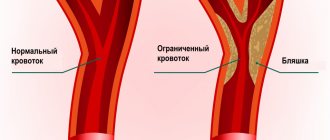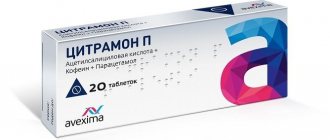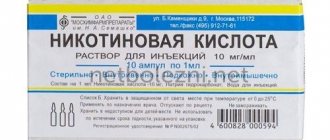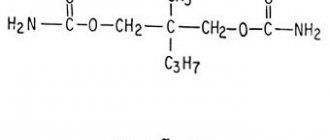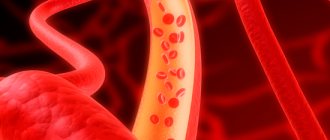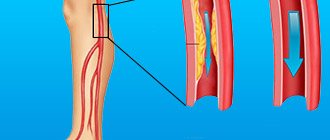What it is
Atherosclerosis is one of the most common chronic arterial diseases. Because of it, an atherosclerotic plaque of cholesterol (cholesterol) forms in the wall of the vessel. These plaques narrow the lumen of the vessel, which affects blood flow, and in extremely advanced cases, plaques can completely block the blood flow. If this happens in a large artery, then the situation is fraught with serious complications, including death: cardiovascular diseases have been one of the main causes of mortality for many years. In addition, the presence of a plaque in a vessel changes the flow of blood: turbulence appears, which contributes to the formation of blood clots (platelet sticking together). The appearance of blood clots poses a risk of their breaking off and clogging the vessel in a narrow place.
Diet for atherosclerosis
If lipid metabolism is disturbed, it is necessary to saturate the menu with vegetables, fruits, and bran, which help cleanse blood vessels. The diet must include foods that have an anti-sclerotic effect:
- oranges or tangerines;
- apples;
- tomatoes;
- beet;
- salad;
- cucumbers;
- rhubarb;
- garlic;
- fenugreek.
According to the chemical composition, food should be distributed as follows: 100 g of proteins, 80 g of fats (30% of which are vegetable), 400 g of carbohydrates (of which only 40 g are fast).
The maximum calorie content of the daily diet should not exceed 2500 kcal. If the patient is overweight, this volume is limited to 1800 kcal. The amount of salt is reduced to 3 g per day. Among the cooking methods, preference is given to boiling, stewing, and baking.
Causes and prevention of atherosclerosis
The cause of atherosclerosis is a disorder in fat metabolism - the accumulation of cholesterol (namely low-density lipoproteins) in excess quantities. Cholesterol is necessary for the body because... participates in many important processes such as the production of certain hormones, and is also part of the cell membrane. With a genetic predisposition to the accumulation of cholesterol, with an unbalanced diet, this substance becomes too much, the body cannot cope with its breakdown, and the excess begins to be deposited in the walls of blood vessels, leading to atherosclerosis.
Factors contributing to the development of atherosclerosis are considered to be: high blood pressure, diabetes mellitus, excess weight, stress, smoking, alcohol, age over 50 years. It is worth noting that the development of the disease often begins at a young age, and by the age of 50-60 the main symptoms appear.
A good method of preventing atherosclerosis is an active lifestyle, balanced physical activity and the fight against excess weight, if present.
Most resources also offer a balanced diet, or more precisely, reducing the consumption of animal fats as the main method of preventing atherosclerosis, i.e. the appearance of excess cholesterol. But some studies indicate that vegetable fats and carbohydrates can provoke an increase in blood cholesterol levels. Therefore, in your approach to your own nutrition, you should be guided by common sense and moderation. Both animal and vegetable fats are necessary for the body to function comfortably, and their excess (like an excess of any other substances) can lead to lipid metabolism disorders. But all researchers agree that consuming vegetables and fruits, adding fish to the diet, and moderate calorie intake are key and proven methods for preventing problems with blood vessels and more.
Treatment methods for atherosclerosis
Effective treatment of atherosclerosis must be comprehensive and include both drug and non-drug methods.
Drug therapy
Drug treatment for atherosclerosis is primarily aimed at reducing the synthesis of cholesterol by the patient’s body, reducing its intracellular content, enhancing the removal of cholesterol and its metabolites from the body, and inhibiting the absorption of cholesterol in the intestine.
Non-drug treatments
Non-drug treatment of atherosclerosis is aimed at eliminating modifiable factors of the disease. First of all, this:
- quitting smoking and alcohol abuse;
- normalization of body weight;
- proper nutrition. It is necessary to reduce the consumption of foods high in cholesterol (it is advisable to avoid fatty and fried foods). The optimal menu should contain a significant amount of vegetables and fruits rich in fiber and vitamins. And meat can (and should) be replaced with fish;
- increasing physical activity. Physical activity is necessary, but it must be dosed (agreed with your doctor). It is also important to ensure that the body receives enough oxygen (it is optimal to exercise in the fresh air);
- exclusion of conflict situations and overwork (anti-stress psychotherapy).
Make an appointment Do not self-medicate. Contact our specialists who will correctly diagnose and prescribe treatment.
Rate how useful the material was
thank you for rating
Diagnostics
To diagnose atherosclerosis, both laboratory and instrumental methods can be used:
- general blood analysis;
- blood cholesterol level test;
- angiography (injection of a contrast agent into the blood, which reflects X-ray radiation and gives the specialist a detailed map of the condition of the vessels of the entire body);
- CT, MRI;
- coronary angiography (to study the coronary arteries);
- ECG, echocardiography (echocardiography);
- Holter ECG monitoring (to detect disturbances in heart rhythms);
- Ultrasound (to study the condition of the aorta, kidney vessels, heart).
Diagnostics usually does not cause problems for an experienced doctor - for this, our center has all the necessary equipment. After all, modern high-tech devices will be required - the better the equipment, the more detailed the examination data will be, which will help the doctor choose the optimal treatment method.
Which doctor treats vascular atherosclerosis?
If atherosclerosis is suspected, an examination by a specialist is necessary:
- Angioneurologist - for atherosclerosis of cerebral vessels;
- Cardiologist - for atherosclerosis of the heart vessels;
- Vascular surgeon - for signs of diseases of the arteries of the arms or legs, neck, chest and abdominal cavity.
It is necessary to see a specialist (vascular surgeon) if you have one or more risk factors for atherosclerosis, and also have complaints characteristic of arterial diseases. It is especially important to seek qualified help during the initial manifestations of the disease, when it is possible to prevent the development of severe complications of atherosclerosis.
Before prescribing instrumental diagnostic methods, the doctor must evaluate the patient’s complaints. Collect information about past illnesses and past treatments. An objective examination provides detailed information about the severity and extent of the disease.
In some cases, the diagnosis of atherosclerosis can be excluded at the stage of the initial examination. If vascular atherosclerosis of one location or another is detected, the doctor may prescribe an additional examination.
Laboratory and instrumental studies that can be used to diagnose atherosclerosis:
- ultrasound duplex scanning of blood vessels,
- X-ray contrast angiography,
- CT scan,
- Magnetic resonance imaging,
- ECG,
- treadmill test,
- lipidogram, etc.
Atherosclerosis of the cerebral arteries
When cholesterol plaques form and the arteries of the brain narrow, the brain cells experience a lack of blood and nutrients. The following symptoms may indicate this condition:
- periodic dizziness,
- noise in ears,
- headache,
- increased fatigue,
- disturbances in coordination of movements.
The narrowing of the main carotid artery supplying the brain is identified as a separate diagnosis - carotid artery stenosis. Damage to the vessels supplying the brain carries the threat of a serious disease - ischemic stroke of the brain.
Atherosclerosis of the arteries of the lower extremities
Damage to the arteries of the lower extremities is called obliterating atherosclerosis. People over 65 years of age, especially men, are susceptible to it. This disease manifests itself in the following symptoms:
- pain in the calves, cramps at rest;
- pain when walking, causing you to limp;
- numbness in the legs, fatigue when walking;
- the appearance of non-healing wounds, and in advanced cases - ulcers.
If you do not consult a doctor in the presence of such symptoms, then there will be a threat of limb amputation as the only treatment measure for extremely advanced cases of obliterating atherosclerosis.
Can vascular atherosclerosis be reversed?
At the moment, there are no drugs that can get rid of atherosclerosis and cleanse blood vessels from atherosclerotic plaques.
Atherosclerosis is an irreversible disease and cannot be completely cured. For advanced forms of atherosclerosis, surgical treatment is often used. Modern surgical methods make it possible to perform the operation effectively, in a low-traumatic manner and without serious consequences for the body, to restore the lumen of a vessel affected by atherosclerosis and to resume sufficient blood flow to the organ.
Atherosclerosis of the coronary arteries
Atherosclerosis of the coronary arteries (which bring blood to the tissues of the heart) is one of the main causes of coronary heart disease and myocardial infarction: when the disease affects the vessels of the heart, heart muscle cells begin to die due to insufficient nutrition. And the risk of blood clot formation and vessel blockage only aggravates the situation. This condition is extremely dangerous, life-threatening and requires consultation with a doctor. You should pay special attention to possible symptoms:
- chest pain;
- feeling of heaviness, tightness in the chest;
- arrhythmia, i.e. fast or slow heartbeat;
- feeling of a sinking heart.
Do not underestimate the above symptoms. Let us remember that the risk of developing atherosclerosis is present in many people. Complications of the disease without proper treatment are so dangerous that you should consult a doctor, even if you are afraid of a confirmed diagnosis or surgery. Modern medicine has advanced far in the treatment of atherosclerosis of various localizations.
Who's at risk
All people are susceptible to atherosclerotic changes in blood vessels to one degree or another. It all depends on when atherosclerosis leads to serious complications - at 40 years old or at 80. Let’s consider the main groups of people who are at risk of encountering this problem earlier than others:
- People with arterial hypertension. High blood pressure is a damaging factor for blood vessels. When damaged, an inflammatory process develops, which is the main trigger for the appearance of cholesterol plaques.
- People with metabolic diseases. Lipid metabolism disorders, diabetes mellitus, and hormonal disorders are risk factors for the development of atherosclerosis.
- People suffering from obesity. This factor, together with poor nutrition, is one of the main factors in the development of atherosclerosis.
- People leading a sedentary lifestyle. Physical inactivity impairs blood flow and also contributes to the development of congestion.
- Other factors. The development of atherosclerosis is also promoted by infectious diseases (sources of inflammation), unhealthy diet, stress, hereditary factors, and increased blood viscosity.
Important : atherosclerosis and cholesterol. Until the end of the last century, doctors believed that there was a direct connection between eating animal foods (which contain cholesterol) and atherosclerosis. It was believed that the more cholesterol you consumed, the higher the likelihood of disease. However, cholesterol alone is not enough for the development of atherosclerosis. If the walls of the arteries are not damaged, then no matter how much cholesterol circulates in the blood, there will be no atherosclerosis. In addition, the main amount of cholesterol is synthesized in the liver, so cholesterol introduced from outside has virtually no negative effect.


